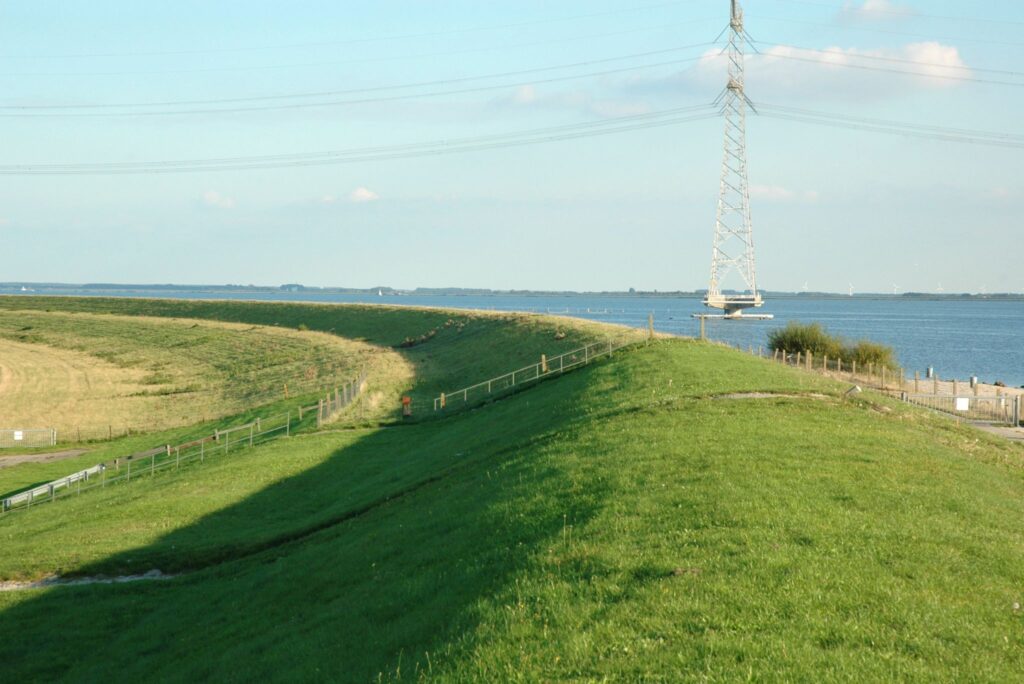Levees & Flood Prevention: How Does the Formation of a Natural Levee Impact Flooding?
How does the formation of a natural levee impact flooding? It can keep the water of a river or lake from overflowing onto dry land and destroying your property.

A levee can be a key asset in preventing major flooding from a river, lake, or ocean. Natural levees withstand immense weight and pressure from flooding caused by storm surges, but they can take years to form. Fortunately, a natural levee can be reinforced with a flood barrier (or an artificial levee can be created from scratch) with TrapBag flood barriers.
What Is a Natural Levee?
A levee is a natural barrier alongside a river, lake, ocean, or other body of water that has been created by deposits of sediment over a number of years. The average height of a levee can range from about a foot to nearly seven feet. When water levels rise due to seasonal shifts or flash flooding, a levee can hold back the water to prevent flooding until the levels go back down.
What Does a Levee Look Like?
A natural levee usually looks like a small hill or slope that rises up from the bank of a river or other body of water. They can differ widely in size depending on their age, their place alongside the body of water, and the size of the body of water. They often have grass or other vegetation growing on top of them, which helps to prevent water from eroding them.
How Natural Levees Are Formed
Natural levees are formed when a river, stream, or the waves of a lake or ocean push silt or sediment against a bank. Over time, these tiny deposits build up and raise the bank. This process not only hardens the bank against the flowing river, but it can also act as a barrier when a storm surge takes place.
Examples of Natural Levees
It can be difficult to find significant examples of entirely natural levees in populated areas today because many of them have been augmented over the years to protect against flooding. One of the most famous examples of a natural levee is the Yellow River in China. However, in the last several years, researchers have discovered evidence that people have been adding to the Yellow River for about 3,000 years.
How Do Levees Work?
Levees are actually quite simple. They essentially strengthen the bank of a body of water and raise it up. You may not even notice a natural levee 99% of the time because they blend in with the surrounding environment. But when the water levels begin to rise the levees keep the river or lake from overflowing onto dry land. This is especially important in cases where there are houses, businesses, farmlands, or infrastructure close to the body of water. Think of a levee kind of like a short but very long dam that runs alongside the banks, sometimes for miles at a time.
How Does the Formation of a Natural Levee Impact Flooding?
While a river levee creates a barrier against flooding in its immediate vicinity, it may also make flooding more likely to occur in other spots along the river. This is because the buildup can pinch the water as it flows through the river, which builds pressure and can make flooding more likely further downstream.
What About Artifical Levees?
Artificial levees have been built for thousands of years to protect towns and farmlands from seasonal rises in water levels and from periodic flooding. They are famously used in flood-prone areas such as the Netherlands and Louisiana.
An artificial levee works much the same as a natural levee, except it can be deployed more specifically and more strategically to protect specific areas.
How Are Artificial Levees Built?
Permanent, artificial levees can be made from a range of materials, including rocks, sand, dirt, concrete, wood, or metal, depending on the location. In order to blend them into the existing landscape, many artificial levees are made with dirt and planted with grass. These levees are popular along rivers that are known to periodically crest at certain times of the year, such as the Mississippi River.
But these kinds of levees can take a long time to build and usually aren’t the most cost-effective solution. The conditions to create a flash flood can pop up quickly, and there may only be a matter of days to build an artificial levee. What can make this even more complicated is there are often many other people trying to build their own flood control solutions at the same, leading to heavy competition for labor and resources.
Also, many natural levees are in the process of forming and have not quite reached the level to be strong enough to withstand potential floodwaters. Therefore, many existing levees are reinforced with permanent or temporary solutions.
Creating an Artificial Levee with TrapBag
The flexibility of TrapBags makes them an excellent choice for quickly building a dependable artificial levee or reinforcing a natural one. TrapBags are able to use many of the same filler materials that are used to make an artificial levee, but they are able to do so far more efficiently. The vertical and pentagon-shaped structure of TrapBags allows them to connect together like an accordion to create a strong flood barrier.
Why Choose TrapBag?
TrapBags are not only affordable but they can be quickly deployed in case of a pending flood situation. A small team of workers using a front-end loader or other heavy equipment can fill a hundred-foot section of TrapBag within a matter of hours.
TrapBags have been successfully used as flood barriers to prevent erosion and flooding as well as divert mudslides and storm surges. They are far more efficient and much easier to deploy than standard sandbags.
They can also be purchased in a number of different sizes and in evenly measured sections.
Flood Prevention with TrapBag
Talk to the friendly staff at TrapBag about how our flood bags can be used to create an artificial levee and protect against flooding in your area. We’re happy to walk you through the process of strategically deploying a TrapBag flood barrier.
Meet the author
Get the Dirt Before the Flood Hits
Stay ahead of flooding, erosion, and disaster response challenges. The Dirt, TrapBag’s monthly newsletter, delivers field-tested tips, real-world case studies, and the latest in barrier technology straight to your inbox.

